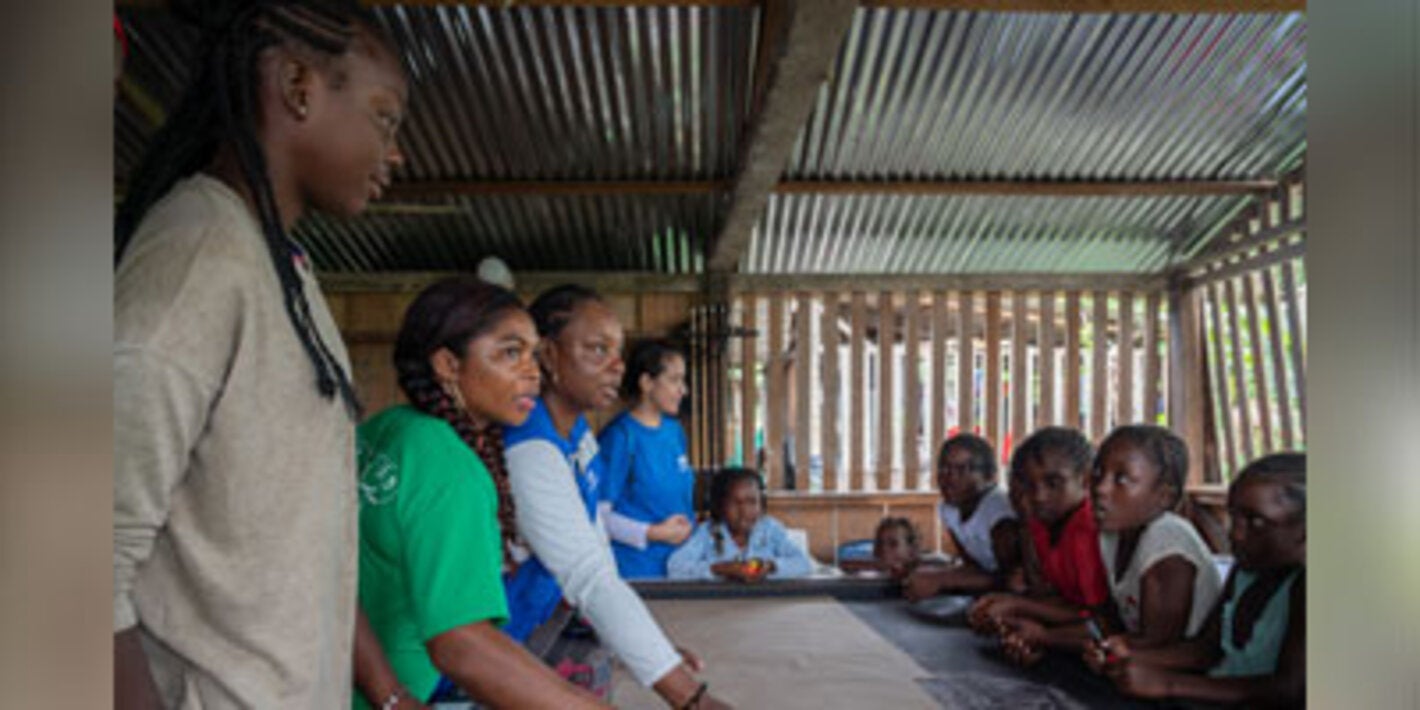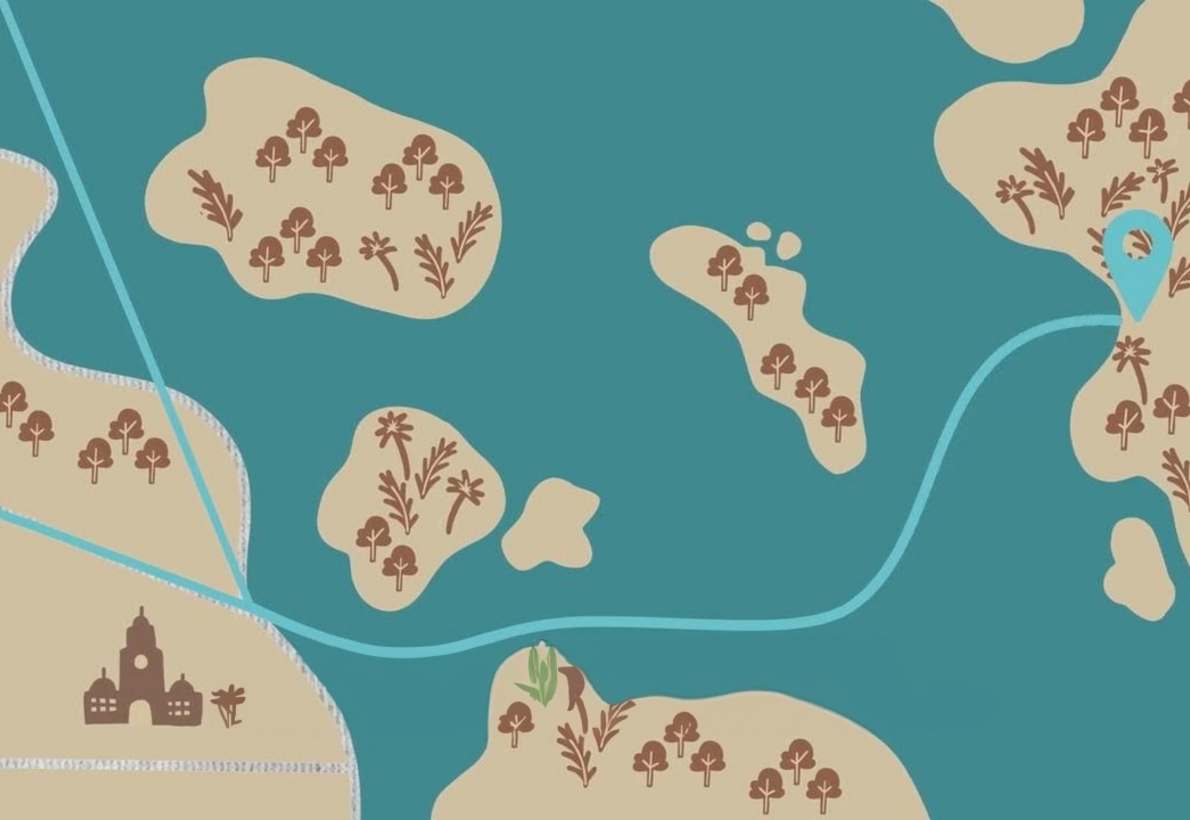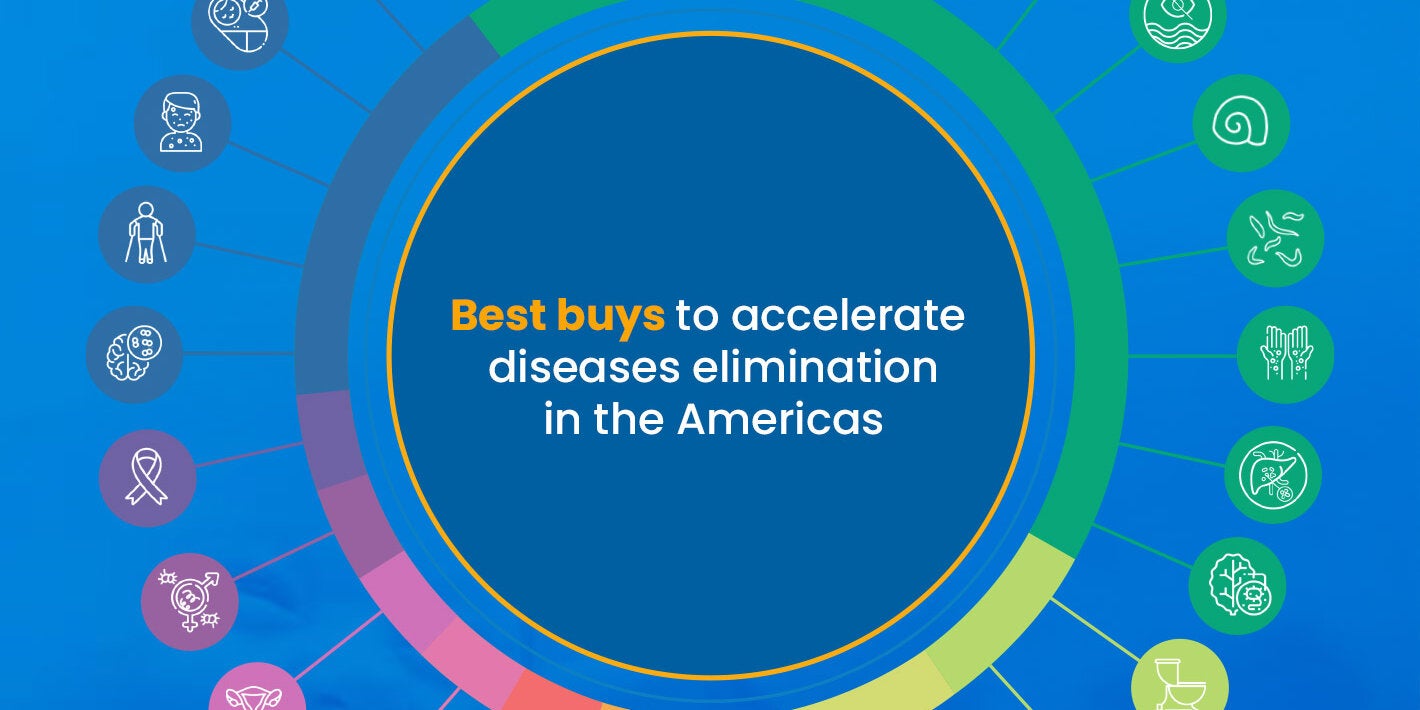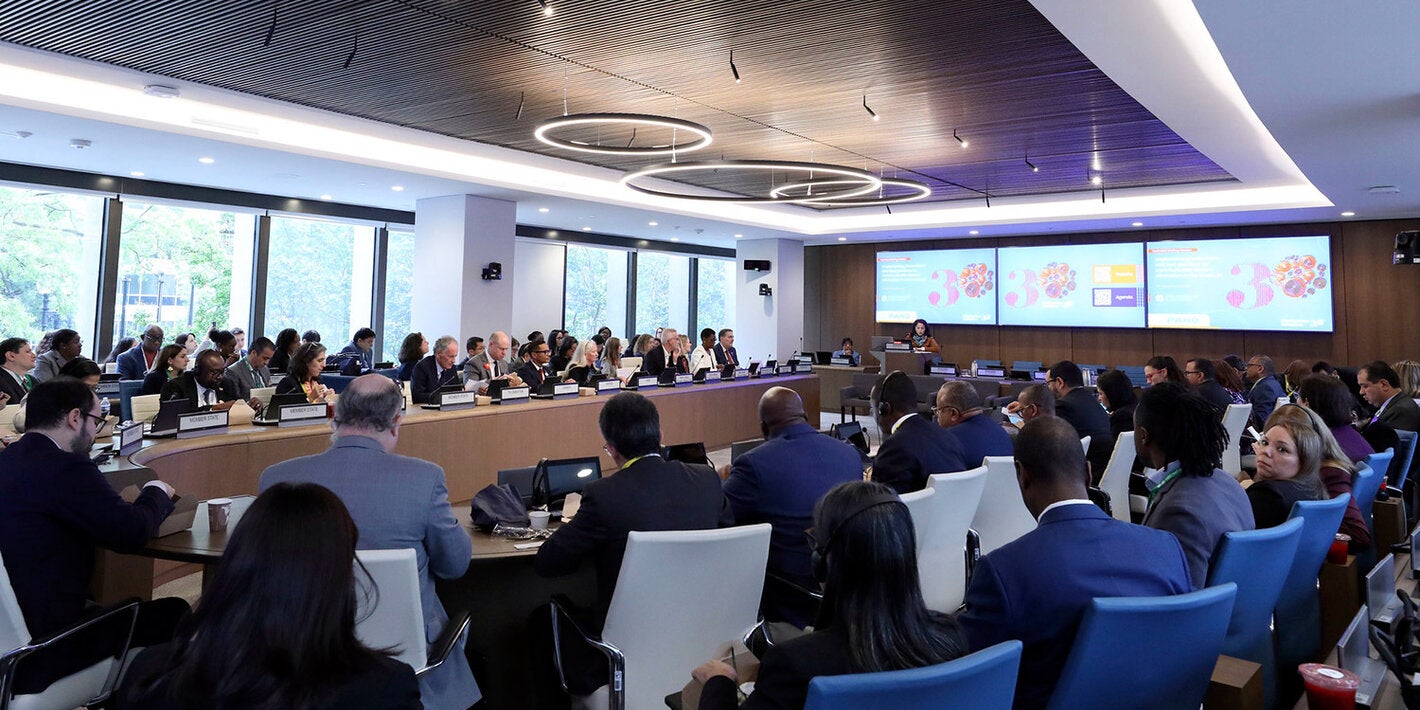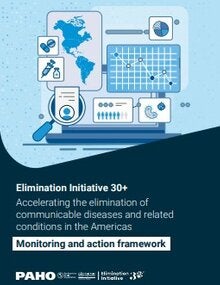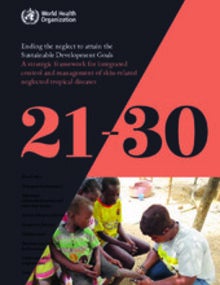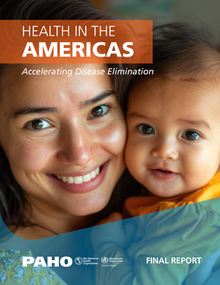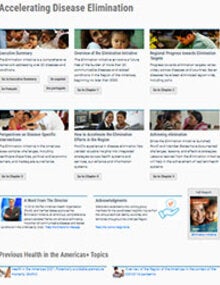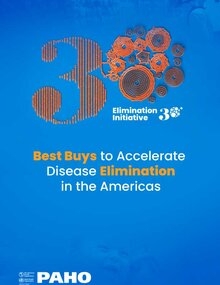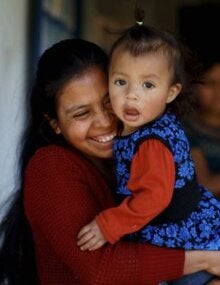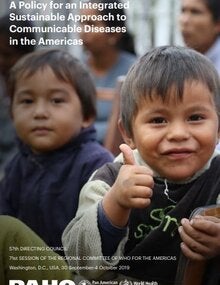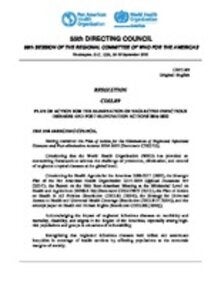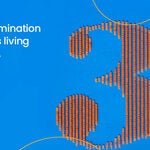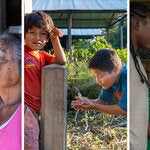SUBMENU
Fascioliasis is an animal parasitic disease (in cattle and sheep, but also pigs, donkeys, Llamas and alpacas that can be transmitted to humans. The infection is caught when aquatic or semi-aquatic plants with the larvae of the worm attached to their stem or leaves are ingested raw or poorly cooked. Once in the human body, the worm lodges itself in the main bile ducts and is responsible for severe morbidity. Endemic areas are distributed globally, but some of the most affected communities are found in the Andean highlands of South America. Triclabendazole is the only drug recommended for prevention and treatment and is provided free-of-charge to endemic countries through WHO. It can be distributed in mass interventions when clusters of cases are detected.
- In the American hemisphere, only one of these two trematode species is transmitted (F. hepatica). However, there is limited information on the burden of fascioliasis in humans and its geographical distribution.
- In 1995, WHO calculated that approximately half of the 2.39 million people infected worldwide lived in Bolivia, Ecuador, and Peru. The world’s principal endemic areas are in the Andean altiplano, with high prevalence rates of infection in indigenous communities.
- Triclabendazole is the only medicine recommended by WHO for the treatment of human fascioliasis.
- Bolivia has the largest program in the world for distribution of triclabendazole and its experience is paving the way for other affected areas to implement the lessons learned in recent years.
- In addition, fascioliasis has an important economic impact, which is linked to losses in the livestock due to reduced animal productivity, as well as to restrictions on exports and reduced consumer demand.
- Estimates from the WHO Foodborne disease burden Epidemiology Reference Group (FERG) (2015) identified the 4 species of food borne trematodes as important causes of disability with an estimated annual total of 200 000 illnesses and more than 7 000 deaths, resulting in > 2 million disability-adjusted life-years (DALYs) (1) globally.
Fascioliasis is a parasitic zoonotic infection caused by two trematode species: Fasciola hepatica and F. gigantica. Both are leaf-shaped and large enough to be visible to the naked eye. As the name suggests, F. gigantica is slightly more conspicuous in size, and can reach 5 centimeters in length.
In the American continent, the only species transmitted is F. hepatica. Information on the burden of fascioliasis in humans and its geographical distribution is however limited. In 1995, WHO estimated that approximately half of the 2.39 million infected individuals globally were living in three Latin American countries (Bolivia, Ecuador and Peru) [1]. The Andean highlands represent the most endemic areas of the world, with high levels of prevalence of infection among indigenous communities [2,3].
References
- World Health Organization. Control of foodborne trematode infections. Report of a WHO Study Group. WHO Technical report Series 849. Geneva: WHO, 1995
- Mas-Coma S, Anglés R, Esteban JG, Bargues MD, Buchon P, Franken M, Strauss W (1999). The Northern Bolivian Altiplano: a region highly endemic for human fascioliasis. Tropical Medicine and International Health 4(6):454-467
- Mas-Coma S (2005). Epidemiology of fascioliasis in human endemic areas. Journal of Helminthology 79(3):207-216
The adult worm lives in the bile ducts of infected humans or animals (usually cattle or sheep, but also donkeys and pigs, llamas and alpacas) and lays eggs that are passed in faeces. If the faeces reach freshwater sources, the worm's eggs hatch into larvae called miracidia. Miracidia find their way to particular type of lymnaeid water snails that act as intermediate host. In the snail, miracidia reproduce and generate another type of larvae, called cercariae, which are released into the water. Cercariae swim to nearby aquatic or semi-aquatic plants where they stick to the stem and leaves and form small cysts (metacercariae). Transmission to other animals and humans occurs when the plants, with the cysts attached, are ingested, acting as carriers of the infection. After ingestion, the metacercariae excyst in the duodenum giving rise to young worms that migrate through the intestinal wall, the peritoneal cavity, and the liver tissue into the biliary ducts, where in a few months they develop into adults and start laying eggs, thus closing the cycle [1].
References
- World Health Organization. Report of the WHO Informal Meeting on use of triclabendazole in fascioliasis control. WHO headquarters, Geneva, Switzerland, 17-18 October 2006. Geneva: WHO, 2007
The clinical picture of human fascioliasis can be divided in two phases: acute and chronic [1].
The acute phase is elicited by the migration of young worms through the hepatic tissue. It can last from weeks to months after ingestion of the metacercariae and is characterized by fever, nausea, hepatomegaly (swollen liver), abdominal pain, urticaria and eosinophilia. Internal bleeding is common.
The chronic phase begins when the worms reach the bile ducts. Colic pain and jaundice are common and caused by the intermittent obstruction of the bile ducts by the adult worm. Chronic infection of the duct walls and of the surrounding liver tissue is associated with fibrosis. Pancreatitis, gallstones and bacterial superinfections are also common. Anaemia is invariably present. The chronic phase can last several years, and be as long as the life span of the adult worms in the human organism. Children usually suffer from a more severe clinical picture, in reason of the smaller size of their organs and the consequent larger relative size of the worms.
References
- World Health Organization. Report of the WHO Informal Meeting on use of triclabendazole in fascioliasis control. WHO headquarters, Geneva, Switzerland, 17-18 October 2006. Geneva: WHO, 2007
A suggestive clinical picture and a history of consumption of raw vegetables can orientate the diagnosis. Watercress is one of the most frequent carrier plants, but many are in fact suitable. Microscopic identification of eggs in stool samples remains the most widely used diagnostic technique, even though it can give falsely negative results in the acute phase. Tests relying on detection of circulating antibodies or of antigens in serum and stool samples are available and useful, especially in the acute phase, but often poorly standardized. Imaging techniques such as ultrasound are helpful complementary tools [1].
References
- World Health Organization. Report of the WHO Informal Meeting on use of triclabendazole in fascioliasis control. WHO headquarters, Geneva, Switzerland, 17-18 October 2006. Geneva: WHO, 2007
Triclabendazole (TCZ) is the only WHO-recommended medicine for treatment of human fascioliasis. The recommended dosage is 10 mg/kg, single administration. A double dose (20 mg/kg) can be administered in case of treatment failures [1,2,3].
In areas where there appears to be a clustering of cases of human fascioliasis, the possibility of administering TCZ in preventive chemotherapy, population-based interventions should be considered. In this case, targeted treatment of school-age children (5-14 years), or universal treatment of the entire population living in those areas, are both appropriate options. The aim of preventive chemotherapy interventions with TCZ is to control morbidity associated with fascioliasis by reducing the worm burden of infected individuals. In order to impact on transmission, however, health education and veterinary public health measures should also be implemented [3].
TCZ is donated free-of-charge to endemic countries by the Swiss pharmaceutical company Novartis Pharma AG, through WHO [4]. A number of countries across the world have already taken advantage of the donation. In the Americas, control of human fascioliasis through treatment with TCZ is implemented in the highlands of Bolivia and Peru, where entire communities are targeted at regular intervals [1,4].
References
- World Health Organization. Report of the WHO Informal Meeting on use of triclabendazole in fascioliasis control. WHO headquarters, Geneva, Switzerland, 17-18 October 2006. Geneva: WHO, 2007
- Stuart MC, Kouimtzi M, Hill SR (editors). WHO Model Formulary 2008. Geneva: WHO, 2008
- World Health Organization. Report of the WHO Expert Consultation on Foodborne Trematode Infections and Taeniasis/Cysticercosis. Vientiane, Lao People's Democratic Republic, 12-16 October 2009. Geneva: WHO, 2011
- Action Against Worms. The "neglected" neglected worms. Issue 7. Geneva: WHO, December 2007
- In 2007, PAHO/WHO initiated distribution of triclabenzadole to control human fascioliasis in the altiplano areas of Bolivia and Peru, where entire communities are treated free of charge at regular intervals.
- PAHO Resolution CD55.R9 (2016), Plan of Action for the Elimination of Neglected Infectious Diseases and Post-elimination Actions 2016-2022, calls for preventing, controlling, and reducing the burden of disease associated with fascioliasis.
- PAHO/WHO also supports the countries of the Region in strengthening diagnosis, treatment, and education to prevent the disease in the communities where it is endemic.




